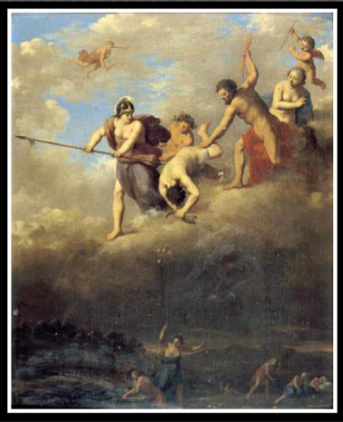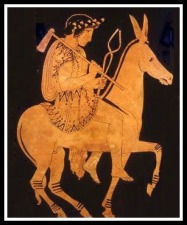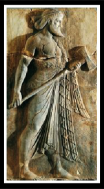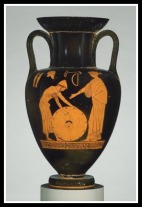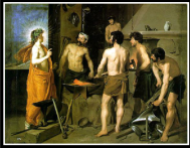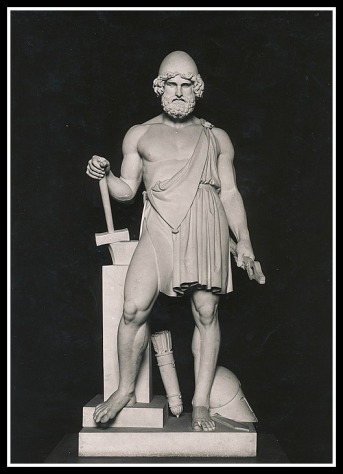► “Tarot and Archetypes” /
“Collaboration with Resa McConaghy” 💢:



__________________________________________________________________________________________
►Introduction:
“We shall not cease from exploration, and the end of all our exploring will be to arrive where we started and know the place for the first time”.-
(T. S. Eliot. “Four Quartets”: Little Gidding).
This is the third post of a series on Tarot (See these two previous posts: Tarot: “Most Relevant Generalities / Major Arcana” and Tarot: “Minor Arcana”).
The following post was written in collaboration with my friend Resa McConaghy, from Graffiti Lux and Murals and Art Gowns. (See brief bio below).
Here, we´ll analyze how certain cards from both Major and Minor Arcana are “archetypes”, and could therefore be related to Greek Mythology. Our pivotal benchmark, as expected, will be the Rider-Waite tarot deck.
We´ll then see how examples of Street Art (Murals and Graffiti) could have equivalents in certain Tarot Cards. We could say that such Symbolic images appear once and over again as expressions of a common collective unconscious. We´ll talk further about this.
We´ll finally dig further into the Major Arcana and the so-called “Journey of The Fool”, which is a graphic expression of Joseph Campbell´s Hero´s Journey, as it appears in his book “The Hero with a Thousand Faces”.
Although there is not such scheme in the Minor Arcana, we can also find certain schemes, involving recurrent narrative sequences. These archetypical patterns provide Minor Arcana with a sort of recurrent cyclic structure, as it happens with the “Journey of the Fool”.
__________________________________________________________________________________________
►About Resa McConaghy:
 Resa is a canadian artist, costume designer and author.
Resa is a canadian artist, costume designer and author. 
Check out Resa´s Blogs: •Art Gowns: http://artgowns.com/ •Graffiti Lux and Murals: http://graffitiluxandmurals.com/
__________________________________________________________________________________________
I. ►Tarot and Greek Mythology:
A. ►Major Arcana: The Magician:
The Magician is associated with the planet, Mercury and carries with it skill, logic, and intellect. The number of the Magician is one (1), the number of beginnings. The Magician is a psychopomp, a bridge between worlds: the World of the Living and the Underworld, a guide of souls.
 In the Marseille French deck this character is called Le Bateleur, “the mountebank” and he is a practitioner of stage magic.
In the Marseille French deck this character is called Le Bateleur, “the mountebank” and he is a practitioner of stage magic.
In the Marseille deck, the table has a square top and three legs. This is because the card represents, among many things, the Great Pyramid of Giza, in Egypt. The Pyramid has sides of three and a base of four. The Magician’s table has three legs and square top. The letter associated with the card is “B,” known in Hebrew as Beth. This term means “house” and connotes the “House of God.” In Egypt, the Pyramid was considered the House of God.

Infinity symbol.
The curves of the magician’s hat brim in the Marseilles image are similar to the esoteric deck’s mathematical sign of infinity (as we see in the Rider Waite deck).
In the Rider Waite deck, this symbol also appears in the Strenght card, as well.
Similarly, other symbols were added in the Rider Waite deck. The essentials are that the magician has set up a temporary table outdoors, to display items that represent the suits of the Minor Arcana: Cups, Coins, Swords. As to the fourth, the Wand, he holds it in his hands. These four suits represent the four elements. Water, Earth, Air and Fire, respectively.

The Magician. Table (Left: Rider Waite. Right: Marseille).
In the Magician’s right hand is a wand raised toward heaven, the sky or the element æther, while his left hand is pointing to the earth. This iconographic gesture has multiple meanings, but is endemic to the Mysteries and symbolizes divine immanence, the ability of the magician to bridge the gap between heaven and earth. The Magician’s robe is white, symbolising the purity and innocence found in the Fool but his cloak is red, representing worldly experience and knowledge. He is surrounded by flowers, symbol of fertility and possibilities.
This card entails feeling centered and committed and being creative. Reversed, the Magician can indicate greed, deceit, manipulation and using one’s skill for negative ends. It can reflect trickery and cunning and mental confusion. Plus, the Magician reversed often suggests that you may be out of touch with reality and struggling to bring yourself back down to earth.
![]()

![]()
The Magician reminds us of Hermes, the Messenger of Gods. Hermes had several attributes and represented many things. Hermes was the Olympian god of herds and flocks, travellers and hospitality, roads and trade, thievery and cunning, heralds and diplomacy, astronomy and astrology. Besides, he was the herald and personal messenger of Zeus. He was also a god of science and wisdom, art, speech, eloquence. And, most importantly: “the God of Writing”.
Hermes´ equivalents were: In Roman Mythology: Mercury. In Norse Mythology, Odin and for the Egyptians, Thoth (also known as Theuth). Hermes Trismegistus could be a representation of the syncretic combination of the Greek god Hermes and the Egyptian god Thoth. Hermes, the Greek god of interpretive communication, was combined with Thoth, the Egyptian god of wisdom, to become the patron of astrology and alchemy. In addition, both gods were psychopomps, who guided Souls into the Afterlife.
•~~~•~~~ •~~~•~~~•~~~•~~~•
B. ►Major Arcana: The High Priestess:
 In the 18th century Marseilles Tarot, this figure is crowned with the Papal tiara and labelled La Papesse, the Popess, a possible reference to the legend of Pope Joan.
In the 18th century Marseilles Tarot, this figure is crowned with the Papal tiara and labelled La Papesse, the Popess, a possible reference to the legend of Pope Joan.
In the creation of the Rider-Waite tarot deck this card changed into The High Priestess, who appears sitting between the pillars of Boaz and Jachin (which has a particular meaning to Freemasonry).
Other variants that came after Rider-Waite are the Virgin Mary, Isis, the metaphorical Bride of Christ or Holy Mother Church.
In the The Rider Waite deck, the High Priestess is majorly associated with Persephone, Isis, and Artemis (previously: Selene).
Selene is the Greek Goddess of the Moon. She is the daughter of the Titans Hyperion and Theia. Besides, Selene is sister of the Sun-God Helios, and Eos, Goddess of the Dawn. In classical times, Selene was often identified with the Goddess of Hunting, Artemis, much as her brother (Helios), was identified with Apollo.
![]()

![]()
In the Rider Waite deck, the High Priestess sits at the gate before the great Mystery, as indicated by the Tree of Life in the background. She sits between the darkness and the light, represented by the pillars of Solomon’s temple, which suggests it is she who is the mediator of the passage into the depth of reality. The tapestry hung between the pillars keeps the casual onlookers out and allows only those initiated to enter.
 The pomegranates on the tapestry are sacred to Persephone. They are a symbol of duty (because Persephone ate a pomegranate seed in the underworld which forced her to return every year).
The pomegranates on the tapestry are sacred to Persephone. They are a symbol of duty (because Persephone ate a pomegranate seed in the underworld which forced her to return every year).
The blue robe the Priestess is wearing is a symbol of knowledge.
She is also wearing a crown, symbolising the Triple Goddess.

The phases of the moon (Triple Goddess Moon).
The High Priestess is associated with the Moon. Like The High Priestess, the Moon is also feminine so it symbolises fertility, hormonal influences and the mysterious side of femininity.
As mentioned above, Selene and Artemis were Greek Goddesses related to the Moon as well.
The solar cross on her breast is a symbol of balance between male and female.
In her lap, she holds the half-revealed and half-concealed Torah, representative of the esoteric teachings and higher knowledge. The moon under her left foot shows her dominion over pure intuition. The palm indicates fertility of the mind and the cube on which she sits is the earth. The planet associated with the High Priestess is the Moon.

High Priestess. Rider Waite deck. Details: Pomegranate and Moon.
The High Priestess could also be identified with the Shekhinah, the female indwelling presence of the divine. She wears plain blue robes and sits with her hands in her lap.
She has a lunar crescent at her feet, a horned diadem on her head, with a globe in the middle place, similar to the crown of the ancient Egyptian goddess Hathor.
The scroll in her hands, partly covered by her mantle, bears the letters TORA (meaning “divine law”, for the jewish tradition). The High Priestess conceals the last letter, “H”, beneath her cloak. The Torah contains Jewish laws in the form of the five books of Moses. Great spiritual knowledge and wisdom is to be found within the Torah. The fact that part of the name is hidden indicates mystery and concealment.
The High Priestess is a card of mystery, stillness and passivity. This is not a time for action of moving forward. Instead The High Priestess suggests that at present you should retreat from your situation. When The High Priestess shows up Reversed, it suggests inability to find your inner voice or to look beyond.
•~~~•~~~ •~~~•~~~•~~~•~~~•
C. ►Major Arcana: The Chariot:
In the Rider Waite version, there is a chariot standing in the middle and two sphinxes are at the bottom, on both sides.
The sphinxes´colors are reversed, pretty much like a Yin-Yang symbol. (See image 3).
The sphinxes highlight the idea of standing still. The man doesn´t move forward. And yet, there is a probable good outcome.

1.

2.
The sky is yellow representing hopes and prospect.
The stars on the curtain and the Sun in his forehead also stands for hope and trust. He seems to follow his own intuition and light… His own star. (See image 1, above).
The latter is a recurrent symbol in the tarot deck, as we can see in the Hermit card (See image 1, below) and the Star card (See image 2).
This card represents power, and also it emphasizes the importance of balance within oneself.

3.
The driver has a Sun on his head. We can see rising and falling moons close to his neck.
The complementary nature of these two opposite forces tend to echo the sphinxes … pointing out to Balance.
The little red top below the wings ad in the middle of the chariot represents Lingam and Yoni, which entails the connection of two extremes (the “Golden mean”).
The card represents Victory, reaching goals. It entails self-control, balance and discipline. If the card is reversed, it means lack of determination or focus, low self-esteem, defeat or confusion.
![]()

![]()
This card can be related to Plato´s allegory of the Chariot, as it appears in his dialogue “Phaedrus”.
As he tries to explain the tripartite nature of the Soul, Plato uses an allegory.
He says that a chariot (representing the Soul) is pulled by two-winged horses, one black and mortal; and the other white and immortal.
The black mortal horse is obstinate and wild. The immortal, white horse, on the other hand, is noble, and a lover of honor and modesty and temperance.
In the driver’s seat is the charioteer. His destination is the ridge of heaven, beyond which he may behold the Forms, the absolute Knowledge. This is a very turbulent ride, as the horses are led by opposite forces. The rider needs to keep the horse in balance. He represents the rational part of the Soul. The Black horse represents man’s appetites, meaning the part of the Soul linked with instincts. The white horse represents man’s spirit, the spirited part of the soul which seeks honor and victory.
This allegory highlights the importance of balance, integration and self-control. The two horses and the charioteer totally echo the characters on the Chariot card. Instead of horses, there are sphinxes, though. But the general meaning is strikingly similar.
The Chariot card also remind us of Helios (later on Apollo), the God and personification of the Sun in Greek mythology. Helios was portrayed as a mighty charioteer, driving his flaming chariot (or gleaming horses) from east to west across the sky each day.
•~~~•~~~ •~~~•~~~•~~~•~~~•
D. ►Minor Arcana: Three of Cups:
The Three of Cups is a card of celebration and accomplishment. Three young maidens dance in a circle with their golden goblets upraised in a toast of joy. Their arms reach out to each other and they connect through their emotions and their friendship with one another. The ground is covered with fruit and there is a general sense of abundance and happiness. Each woman in the Three of Cups has a laurel wreath on her head. Wreaths of this type have long been a symbol of victory and success.
![]()

![]()
At the women’s feet lie various flowers, symbolising joy, beauty.
The Three of Cups represents celebration, festivity and socializing. More broadly, the Three of Cups indicates the end or conclusion of any problems you have been experiencing, particularly those that relate to your interactions with others.
When the Three of Cups reverses it can suggest lack of emotional growth, losing touch with friends, over-indulgence, and gossiping.
This card seems to epitomize the Ancient Greek Charites (also known as “Three Graces”).
The Charites were reputed to be the essence of beauty, charm and grace. They were associated with the Nine Muses, who presided and inspired arts and sciences.
The Charites were three goddesses, who were sisters between them. From youngest to oldest: Aglaea (“Splendor”), Euphrosyne (“Mirth”), and Thalia (“Good Cheer”). Frequently, the Graces were taken as goddesses of charm or beauty in general and hence were associated with Aphrodite, the goddess of love.
•~~~•~~~ •~~~•~~~•~~~•~~~•
E. ►Minor Arcana: Nine of Swords:
The Nine of Swords shows a woman with her head in her hands, sitting up in her bed. She appears to have just woken up from a bad nightmare, and is obviously upset, fearful and anxious following her dream.
Nine swords hang on the wall behind her. The base of the bed is decorated with a carving of a duel in which one person is being defeated by another. All those Swords are weighing heavily on her as she sits in bed. These are all the Swords she has accumulated on her journey. The Figure in the Nine looks in despair and bereft of any logical thinking. She is in a terrible state of sorrow and feels she cannot share her problems or express them properly.
![]()

![]()
The Nine of Swords is the card of fear and nightmares. However, the troubles alluded to in the Nine of Swords are primarily of a psychological nature and do not necessarily indicate suffering in your external reality. That is, it is what is inside your mind that is creating the fear and anxiety. The dreadful worry associated with the Nine of Swords may also come guilt, shame or your conscience eating you up. On the other hand, it may be you who is the victim.
Reversed, the Nine of Swords indicates that you are working yourself up and becoming incredibly stressed and anxious when, really, this does not have to be a complicated issue. It is also possible that you have already worked through this period of worry and depression and are beginning to make a recovery.
The Nine of Swords somehow reminds us of the Erinyes (or Furies). According to the Greek poet Hesiod, they were the daughters of Gaia (Earth) and sprang from the blood of her mutilated spouse Uranus.
The Erinyes were mainly goddesses of vengeance. They could be either the angry goddesses, or the goddesses who hunt up or search after the criminal. Hence they were associated with punishments, mainly in the shape of remorse, shame, regret, sorrow and guilty feelings. The wrath of the Erinyes could lead to disease, illness and dearth. This is mostly what happens in Aeschylus’ “Oresteia”. Euripides was the first to speak of them as three in number. Later authors named them Allecto (“Unceasing in Anger”), Tisiphone (“Avenger of Murder”), and Megaera (“Jealous”). They were depicted as ugly, winged women with hair, arms and waists entwined with serpents.
![]()
__________________________________________________________________________________________
II. ►Tarot and Graffiti:
According to Carl Jung, myth making is an inherent part of the unconscious psyche. Myths typically have a number of rituals associated with it and secondary elaborations and expressions. Art is an example.
How about Street Art?. Well… Street art is usually created as a means to convey a message connected to artistic, political and social ideas. In any case, Street Art could reveal and express archetypes.
Archetypes consist of the mental representations of certain motifs that may vary a great deal in detail without losing their basic pattern. These archetypes manifest themselves in the form of symbolic images that appear throughout the world as expressions of a common collective unconscious.
Tarot embodies archetypes behind which lie similar archetypical meanings. And the same applies to certain graffiti or murals. So let´s see how Tarot and Street Art get juxtaposed in an artistic way.
Resa McConaghy presents us some murals from her great blog “Graffiti Lux and Murals”, illustrating the theme of the Tarot. Let´s take a look…
•~~~•~~~ •~~~•~~~•~~~•~~~•
•~~~•~~~ •~~~•~~~•~~~•~~~•
 _____________________________________________________________________________
_____________________________________________________________________________
►III. The Journey of The Fool in The Major Arcana:
Campbell´s scheme echoes the Journey of the Fool, as displayed in The Major Arcana.
People interpret the Journey of the Fool in various ways. It represents the process of the life cycle (childhood to middle age to old age). More often it is used to illustrate the process of spiritual development of the individual.
Following the Major Arcana´s cards and stages, people begin in a state of innocent ignorance represented by the Fool (card 0), as he begins the journey, and pass into a final state of enlightenment reflected by the World (card XXI). After the World (perhaps paradoxically, maybe logically), comes the Fool again, as in many versions one is thought to be beginning the journey again, simply at another stage of knowledge.
Well get into the stages of the Hero´s Journey, as proposed by Joseph Campbell in his book “The Hero with a Thousand Faces”. And, simultaneously, we´ll present certain different Major Arcana cards exemplifying the particular phases of the journey. (Note that not all the stages are covered. But most of them, are).
•~~~•~~~ •~~~•~~~•~~~•~~~•
•~~~•~~~ •~~~•~~~•~~~•~~~•
References Jouney of the Hero/Journey of the Fool (Major Arcana):
- Call to Adventure: The Fool.
- Meeting the Mentor: The Hierophant.
- Test and Trials: The Chariot.
- Approaching the Innermost Cave: The Hermit.
- Meeting the Shadow Self: The Devil.
- Ordeal: The Tower.
- Boon: The Star.
- Refusal to Return to the Ordinary World: The Moon.
- Dark Night of the Soul: Death.
- Resurrection: Judgement.
- Third Threshold: The Hanged Man.
- Mastery of the Two Worlds: The World.
•~~~•~~~ •~~~•~~~•~~~•~~~•
- Call to Adventure: 0: The Fool.
- Meeting the Mentor: V: The Hierophant.
- Test and Trials: VII: The Chariot.
- Approaching the Innermost Cave: IX: The Hermit.
- Meeting the Shadow Self: XV: The Devil.
- Ordeal: XVI: The Tower.
- Boon: XVI: The Star.
- Refusal to Return to the Ordinary World: XVIII: The Moon.
- Dark Night of the Soul: XIII: Death.
- Resurrection: X: Judgement.
- Third Threshold: XII: The Hanged Man.
- Mastery of the Two Worlds: XXI: The World.
•~~~•~~~ •~~~•~~~•~~~•~~~•
![]()
_____________________________________________________________________________
►IV. Is there a “Journey” in the Minor Arcana?.
How does archetypal interactions might work in Minor Arcana?:
The Minor Arcana does not typically have an overall story or narrative to connect them that is specific to the Tarot alone.
However, one thing we can notice is that Minor Arcana cards also follow a “narrative progression”.
And that this seems to apply to all suits. We´ll provide examples. In order to methodize this, we´ll bring up a book that Colleen Chesebro kindly provided to us. The book in question is “The Writer and the Hero´s Journey”, by Rob Parnell.
In page 43, the author says:
“When telling a story, your overriding concern is to provide a platform from which you can derive conflict. Conflict is drama is story. But in order for drama to be compelling, you must create believable characters first”. He then states that the best way to create good characters is “by providing scenarios in which your characters are tested and can interact convincingly with other characters”.
We´ll use Parnell´s tips to demarcate certain progressions in certain implicit narrative sequences. These interactions could be subtle, but they are arranged in a systematic way, as stages. Hence they provide Minor Arcana with a coherent and recurrent cyclic structure in the form of implicit narrative sequence. Pretty much like the Journey of the Fool in Major Arcana.
Parnell mentions the following “archetypal characters” (not necessarily people, they could be ideas, institutions, etc) who often interact with the main character:
- The Hero’s Sidekick, sometimes called “the Reflection” because they represent the hero’ s inner self as he was before the challenge.
- The Hero’s Nemesis: A bad person, sometimes a situation or an institution the character is fighting against.
- The Hero’s Love Interest, (not always necessary to a story though).
- The Hero’s Mentor: The person who the character/”Hero” goes to for advice or guidance.
Here are some examples of archetypal correspondences:
1 Sidekick: The Five of Wands, considered from the Ten of Cups. The latter represents Harmony and alignment; while the Five Of Wands represents disagreement, tension, conflict.
2. Nemesis: The Three of Swords, considered from the perspective of the character included in the Nine of Swords. The first card represents heartbreak ad rejection; whilst the Nine of Swords depicts someone who is depressed or concerned about certain things. We could say he is somehow fighting against the ideas the Three of Swords represents.
3. Love Interest: Clearly this card: The Two of Cups. Representing: Love and partnership, and considered from any other card (“character”).
4. Mentor: King of Swords and Queen of Cups. Plus King and Queen of Pentacles seem to be characters that could well fulfill this role. King of Swords provides organization and quick thinking. Queen of Cups, emotional safety, calm and compassion. King and Queen of Pentacles represent discipline; and nourishing security, respectively.
•~~~•~~~ •~~~•~~~•~~~•~~~•
![]()
_______________________________________________________________________________________
►Conclusion:
Symbolic images have appeared throughout time, and all over the world. Whether they be myths, motifs, images in dreams or ritual, they are all manifestations of the unconscious psyche.
A.E. Waite had put it in different words, but in the end aligns with the thought that “secret doctrine” is interred in “the consciousness of all”. We may expose our intellect to many creative ideas and philosophical practices, as life and time relentlessly progresses. Not just our bodies mature, but our ideas, ideologies, purpose and direction are called to conscience. This is referred to by some as “Rites of Passage”.

A few cards from The Rider- Waite Tarot deck.
![]()
_________________________________________________________________________________________
⇒Links Post:
http://www.michaeltsarion.com/inner-zodiac.html
https://www.youtube.com/watch?v=qpV40oP8QEI
http://www.aeclectic.net/tarot/cards/pythagorean/
https://www.chabad.org/library/article_cdo/aid/361902/jewish/The-Four-Worlds.htm
https://soa.illinoisstate.edu/downloads/anthro_theses/caldwell_sara.pdfh
https://es.scribd.com/document/311979264/Rob-Parnell-The-Writer-and-the-Hero-s-Journey
https://teachmetarot.com/part-iii-major-arcana/lesson-2/the-high-priestess-ii-upright/
https://teachmetarot.com/part-1-minor-arcana/lesson-2/the-collective-unconscious-archetypes-and-symbols/
_________________________________________________________________________________________


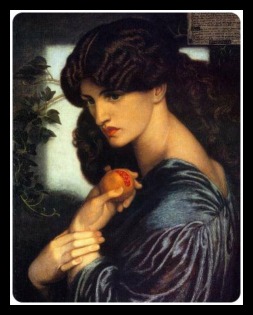

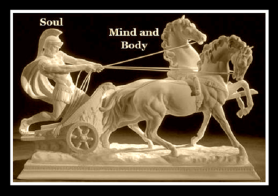










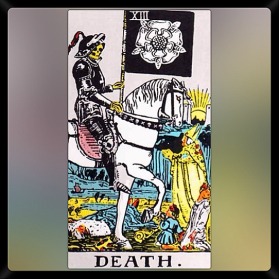






















































 daughter of Helios, the Sun, by the eldest of the Oceanids Perse) become impregnated by a white bull, she gave birth to a sort of hybrid child, the bull-headed
daughter of Helios, the Sun, by the eldest of the Oceanids Perse) become impregnated by a white bull, she gave birth to a sort of hybrid child, the bull-headed















 Resa is a canadian artist, costume designer and author.
Resa is a canadian artist, costume designer and author. 






 This graffiti could be linked to the Werewolf Man-wolf, or Lycanthropeis. Meaning, a mythological human with the ability to shapeshift into a wolf, either purposely or after being placed under a curse or affliction.
This graffiti could be linked to the Werewolf Man-wolf, or Lycanthropeis. Meaning, a mythological human with the ability to shapeshift into a wolf, either purposely or after being placed under a curse or affliction. 



 Helios (Apollo), the Sun god, drives his chariot across the sky each day while Selene (Artemis) is also said to drive across the heavens. And, while the sun chariot has four horses, Selene´s (Artemis´) usually has two, described as “snow-white” by Ovid.
Helios (Apollo), the Sun god, drives his chariot across the sky each day while Selene (Artemis) is also said to drive across the heavens. And, while the sun chariot has four horses, Selene´s (Artemis´) usually has two, described as “snow-white” by Ovid. 

